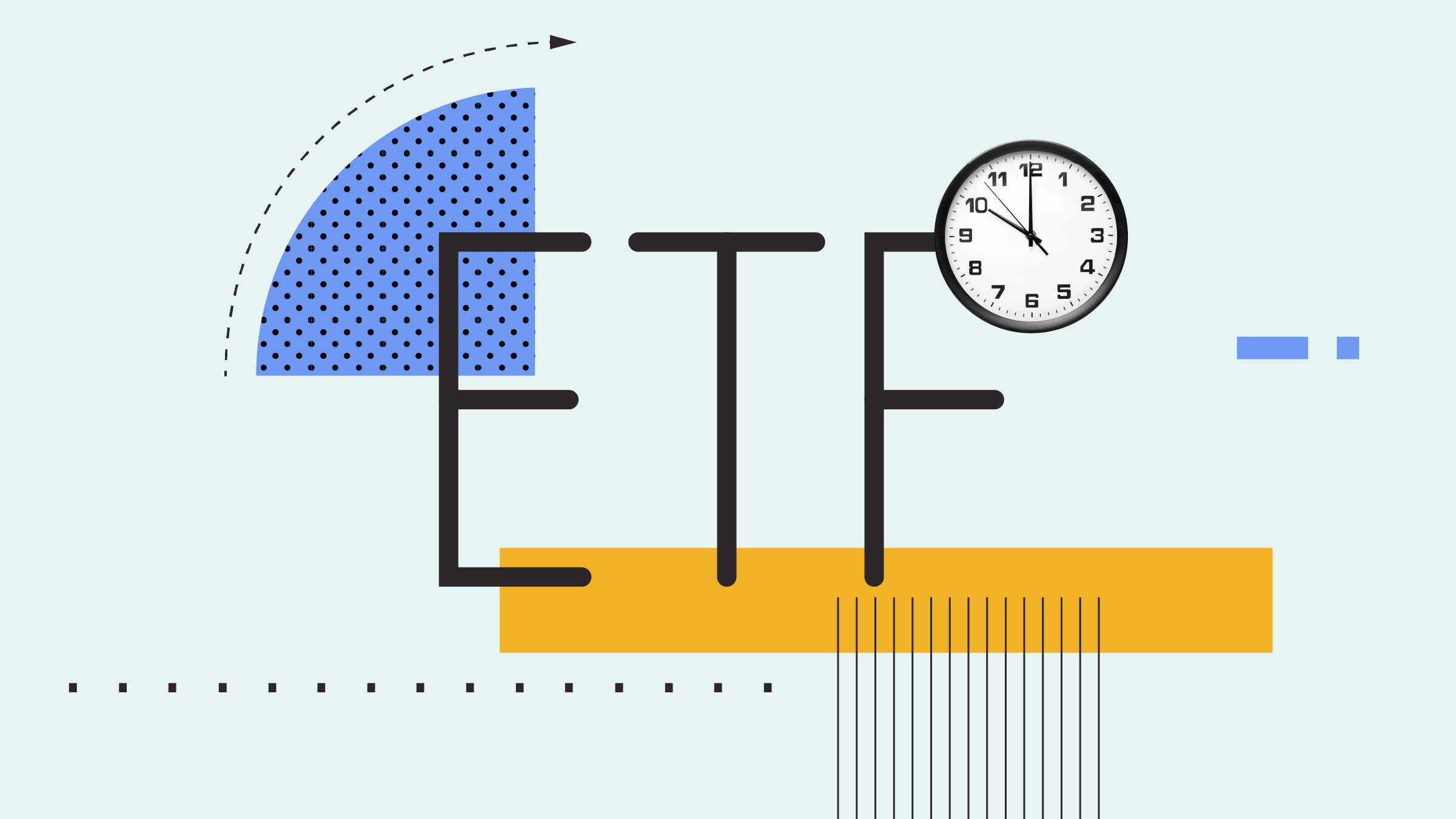Note: This article is part of Morningstar's March 2015 ETF Investing Week special report.
A significant portion of the typical Canadian investor's portfolio is dedicated to American stocks. There are many ETFs that track U.S. equities, so a little help sifting through the various options might be needed.
The S&P 500 Index is the most oft-cited proxy for the U.S. equity market and is viewed as an indicator of the economic health of the nation. Although not as old as the Dow Jones Industrial Average, the S&P 500 is more diversified and weighted by market capitalization, which makes it more representative of the U.S. market. Though it lacks exposure to small-cap stocks, the S&P 500 Index (which accounts for about 80% of the total value of the U.S. stock market) was nearly perfectly correlated with the broad U.S. market during the past decade.
The S&P 500 Index is tracked by eight different TSX-listed ETF options from four different providers. The oldest and largest S&P 500-tracking ETF in Canada, iShares Core S&P 500 (CAD-Hedged) XSP, trades in Canadian dollars and hedges its U.S. dollar exposure back into Canadian dollars. There are also options like Vanguard S&P 500 ETF VFV, which also trades in Canadian dollars but does not hedge its currency exposure. Finally, there is BMO S&P 500 ETF (USD) ZSP.U, which trades locally in U.S. dollars and does not hedge its currency exposure. The appeal of this version is limited to those investors who keep a portion of their portfolio in U.S. dollars.
A unique fund among the group of ETFs that track this ubiquitous benchmark is Horizons S&P 500 ETF HXS, which uses a tax-efficient total return swap structure. As a result it doesn't pay any distributions, but its performance reflects the effect of reinvested dividends. More information on the structure can be found here.
Most investors are likely to stick with a locally listed ETF that trades in Canadian dollars. Those who believe that the Canadian dollar will strengthen relative to the U.S. dollar over their investment period should go with a CAD-Hedged ETF like XSP. Conversely, investors who believe that the Canadian dollar will weaken versus the U.S. dollar should go with an unhedged ETF like VFV. The route an investor ultimately selects can have a significant impact on returns. Click here for more on currency hedging.
Often, currency hedging results in higher costs and greater tracking error. The hedging is imperfect at best because, for practical reasons, the hedges are reset on a monthly basis. As such, the currency hedge could be off if an ETF experiences significant inflows or outflows intra-month. Hedging could also increase the correlation of an ETF's performance to that of Canadian equity offerings, thus decreasing the potential diversification benefits.
| U.S. Equity ETFs benchmarked to S&P 500 | |||||
| Name | Ticker | Assets ($Mil) |
MER | Inception Date |
|
 |
|||||
 |
|||||
| BMO S&P 500 (CAD) | ZSP | 2359.8 | 0.15 | Nov. 2012 | |
| BMO S&P 500 (USD) | ZSP.U | 117.2 | 0.15 | Nov. 2012 | |
| BMO S&P 500 Hedged to CAD | ZUE | 702.3 | 0.16 | May 2009 | |
| Horizons S&P 500 | HXS | 229.4 | 0.17 | Nov. 2010 | |
| iShares Core S&P 500 | XUS | 423.4 | 0.12 | Apr. 2013 | |
| iShares Core S&P 500 (CAD-Hedged) | XSP | 2757.8 | 0.17 | May 2001 | |
| Vanguard S&P 500 | VFV | 594.2 | 0.16 | Nov. 2012 | |
| Vanguard S&P 500 (CAD-Hedged) | VSP | 117.2 | 0.16 | Nov. 2012 | |
 |
|||||
| Data as of Feb. 28, 2015 Source: Morningstar |
|||||
 |
|||||
Total market
For investors who don't want to be limited to large-cap stocks, Vanguard U.S. Total Market provides exposure to the entire U.S. stock market for a low MER of 0.16% and is offered in hedged (VUS) and unhedged (VUN) versions. It is the quintessential core U.S. stock holding, providing investors with an excellent choice for passive exposure to U.S. stocks. No other exchange-traded fund offers such a broad portfolio of U.S. stocks for such a low cost.
Total stock market funds contain all market-cap segments, not just large caps. Holding all stocks within one fund can be more efficient than holding separate funds for exposure to each market-cap segment, as it should result in less need for rebalancing. The exposure to small- and micro-cap stocks may result in some added volatility, but investors have been rewarded for accepting this additional risk over the long term.
Dividend
Most rules-based dividend strategies attempt to balance dividend growth with dividend yield. Strategies like Vanguard U.S. Dividend Appreciation VGG require constituents to have raised their dividend for 10 consecutive years, which is a high hurdle that essentially keeps out low-quality companies. The benchmark for iShares U.S. Dividend Growers (CAD-Hedged) CUD goes even further by requiring 20 consecutive years of dividend growth. Because the typical dividend strategy weights its stocks by their indicated annual dividend yield, these funds tend to display a fairly pronounced value tilt.
Firms with a long track record of raising their dividend every year have signaled to investors that protecting and increasing their payout is a high priority. These companies have the financial strength to increase their distributions even during a market crisis like 2008, and also have the fiscal and managerial responsibility to continue to do so in the future. Research has shown that the market does not fully incorporate these beneficial attributes into the prices of quality firms, so high-quality stocks have better risk-adjusted returns over time than lower-quality stocks.
| U.S. Equity ETFs - Dividend-Based | |||||
| Name | Ticker | Assets ($Mil) |
MER | Inception Date |
|
 |
|||||
 |
|||||
| BMO U.S. Dividend Hedged to CAD ETF | ZUD | 112.4 | 0.34 | March 2013 | |
| BMO U.S. Dividend ETF (CAD) | ZDY | 252.69 | 0.34 | March 2013 | |
| iShares U.S. High Dividend Eq (CAD-Hdg) | XHD | 170.7 | 0.33 | Aug. 2012 | |
| iShares U.S. Dividend Growers(CAD-Hdg) | CUD | 460.9 | 0.68 | Sept. 2011 | |
| RBC Quant U.S. Dividend Leaders ETF (CAD) | RUD | 184.3 | 0.44 | Jan. 2014 | |
| Vanguard U.S. Dividend Appreciation ETF | VGG | 140.9 | 0.29 | Aug. 2013 | |
 |
|||||
| Data as of Feb. 28, 2015 Source: Morningstar |
|||||
 |
|||||
Fundamental
In contrast to traditional market-cap-weighted indexes, the fundamental benchmark behind iShares U.S. Fundamental (currency-hedged CLU and unhedged CLU.C) and PowerShares FTSE RAFI U.S. Fundamental PXU weights its holdings according to fundamental measures, including book value, cash flow, sales and dividends. This allows it to avoid the tendency of market-cap-weighted indexes to assign bigger weightings to more expensive stocks and smaller weightings to cheaper ones.
Most fundamental indexes, including this one, exhibit a value tilt. To illustrate, consider two stocks that generate the same amount of earnings. If one trades at a higher multiple of earnings than the other, it would receive a greater weighting in a market-cap-weighted index. In contrast, an earnings-weighted (fundamental) index would assign the same weighting to these stocks. This would cause it to give an overweighting to the cheaper stock and underweighting to the more expensive one.
Fundamental weighting causes the funds to trim exposure to stocks whose valuations have expanded relative to their peers and increase exposure to those whose valuations have compressed when it rebalances. These disciplined bets against the market may help the funds more effectively profit from mean reversion in valuations than market-cap-weighted value funds. However, they can also increase exposure to stocks with deteriorating fundamentals because accounting metrics are usually slower to pick that up than market prices.
Low volatility
Low-volatility stocks have historically offered higher risk-adjusted returns than their more-volatile counterparts, suggesting that the market has not offered adequate compensation for incremental risk. Leverage aversion may help explain this anomaly. Individual investors may be unwilling or unable to use leverage to achieve their return objectives. Similarly, mutual fund managers are compensated based on their performance relative to a benchmark. However, most are not allowed to use leverage to boost their returns. Consequently, those seeking higher returns are forced to overweight more-volatile and higher beta stocks, which theory predicts should outperform in a rising market. Their collective bet on these volatile stocks may cause them to become overvalued relative to their less risky counterparts. Investors may also overpay for volatile stocks, which offer a small chance of a high payoff, similar to a lottery ticket.
Unfortunately, the three TSX-listed U.S. equity ETFs that follow this strategy -- of which BMO Low Volatility U.S. Equity ZLU is the largest -- have relatively short live records.
My picks
For investors who favour a simple S&P 500-tracking ETF I suggest Vanguard's VFV. For total market exposure I'd go with Vanguard's VUN. And for a strategic-bent on the asset class, RBC's RUD looks intriguing. Remember that these are building blocks for a portfolio, not short-term tactical picks. I offer these picks in an effort to simplify the process for investors, but I encouraged you to use the information and data provided in this article to make your own picks.




















